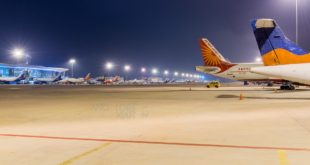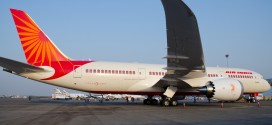2011 has been a banner year for aviation technology, with such momentous events as the delivery of the first Boeing 787, and static assembly beginning on the Airbus A350.
However, no new technology has been as influential as the Geared Turbo Fan (GTF) offered by Pratt & Whitney on its new PurePower PW1000G series of engines to be used on aircraft such as the Bombardier C-Series, the Irkut MS-21, and the Airbus A320neo family.
The GTF is not a new concept, having been utilized on the long-established Honeywell TFE731, the Honeywell ALF 502/507. However, the PW1000G is the first modern application of the technology to a large commercial aircraft. A geared turbofan itself is a simple concept; it consists of a geared ducted fan with a smaller diameter turbojet engine mounted behind it that powers the fan.
For typical jet aircraft engines, as the bypass ratio increases, the mean radius ratio of the fan and LP turbine also increases. Thus if the fan must rotate at its optimum blade speed, the LP turbine will spin slowly, so additional LPT stages are required to extract enough energy to power the fan.
Adding a planetary reduction gearbox with a suitable gear ratio between the fan and the turbines enables both to operate at their optimum speeds without extra stages.
Thus Pratt has been able to achieve an unprecedented bypass ratio of 12.2:1 with their new GTF, while still allowing it to spin at lower speeds than conventional aircraft engines, all without additional stages.
Source: Pratt and Whitney
What makes the PW1000G so amazing is that this geared application will reduce fuel burn by an average of 15% upon entry into service (EIS). Equally as impressive is the reduction in maintenance costs it allows for.
The GTF requires fewer stages and thus fewer parts than competing engines like CFM International’s LEAP-X that will power Boeing’s 737 MAX. CFM could increase fuel efficiency by making the fan on the LEAP-X larger, but that would increase maintenance costs; a sector in which the GTF already has a 20% advantage.
Moreover, the GTF could reduce fuel burn by a further 10% over 10 years by simply adding more stages, a luxury its competitors cannot afford due to the aforementioned maintenance implications.
Pratt has stated that they could scale the PW1000G series, which currently generates between 10,000 and 40,000 pounds of thrust, up to the 100,000 pounds of thrust required to power modern wide-bodied aircraft.
It will be interesting to see how they approach this task, and whether they can break into the duopoly on large aircraft engines currently held by Rolls Royce with its Trent 800, 900 and 1000 series which powers the Boeing 777, the Airbus A380, and Boeing 787 respective, and General Electric with its famous GE90s which power the current generation Boeing 777s.
 Bangalore Aviation News, Reviews, Analysis and opinions of Indian Aviation
Bangalore Aviation News, Reviews, Analysis and opinions of Indian Aviation



One comment
Pingback: Airbus A320neo to make it's maiden flight on Thursday - Bangalore Aviation